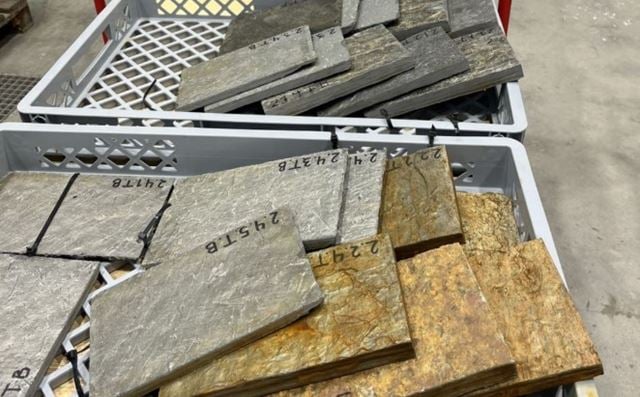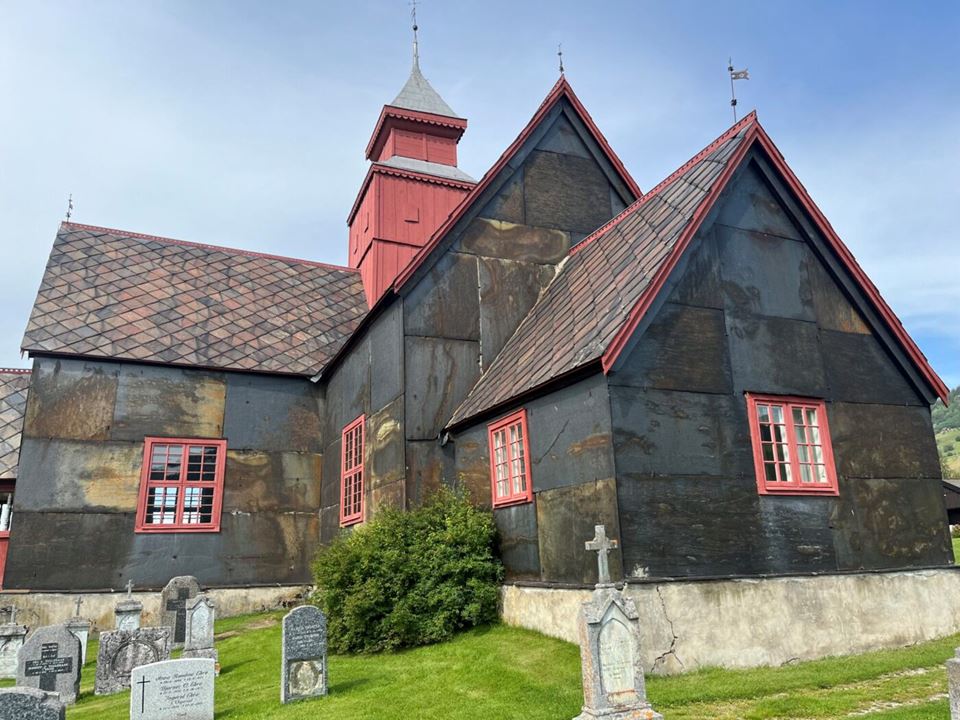In 2024, it became mandatory in Norway to include climate and environmental requirements for public sector construction. Climate and environmental considerations will now be weighted at a minimum of 30 percent.
To find out how environmentally friendly a material is, an Environmental Product Declaration (EDP) is used. This makes it possible to compare the environmental footprint of various building products.
“But the EPDs are based on the assumption that materials should have a lifespan of 60 years,” says SINTEF senior researcher Lisbeth-Ingrid Alnæs, who studies natural stone as a building material.
The lifespan of stone can be much longer. That is why SINTEF has recently investigated how use and weather conditions affect slate on various buildings.

Slate samples ready for testing in SINTEF’s laboratory. Photo: Lisbeth-Ingrid Alnæs
The goal was to understand and quantify the relationships between colour change, technical material properties and lifespan. The results have provided new knowledge about how use and exposure affect both the appearance and lifespan of the slate, and how the material can function in the best possible way.
“We found that the functionality of much older roofs and façades made of Otta slate was still intact,” says Alnæs.
Because the long lifespan of natural stone is not reflected in today’s Life Cycle Assessments (LCA) and EPD calculations, the environmental footprint of these materials appears to be larger than it actually is.
Facts about Otta slate:
Otta slate started as clay and sand that was deposited in shallow seas at a river delta around 480 million years ago. The deposits were eventually deformed and transformed in the Caledonian mountain range formation, and the slate came to rest at Pillarguri peak, just south of the town of Otta in Gudbrandsdalen, a valley in Innlandet county.
It became a phyllite slate with a vibrant appearance that is not found anywhere else in the world. But you can find it in a number of buildings and structures in Norway and abroad.
This year marks the 150th anniversary of Otta slate production. FORREGION provides strategic funding for research-based regional innovation in Norway, and FORREGION Innlandet has supported the pilot project "Knowledge development for the life cycle of Otta slate from a future climate perspective."
“The climate change that we’re facing, with warmer weather, is expected to have a detrimental effect on most building materials and structures. Increasing precipitation and temperatures can also affect natural stone, for example by causing patination and other change processes to occur more quickly. The lifespan of natural stone could therefore be impacted,” says the researcher.
Nevertheless, slate has proven to be a tough and sustainable material that, given suitable construction technical conditions, can deteriorate more slowly. SINTEF has concluded that these considerations must be taken into account when erecting public buildings.
You can read more about slate as an outdoor covering in the Norwegian article: Unngå byggskader med riktig utnyttelse av skifer i utendørs dekker [Avoid building damage with the correct use of slate in outdoor coverings].


